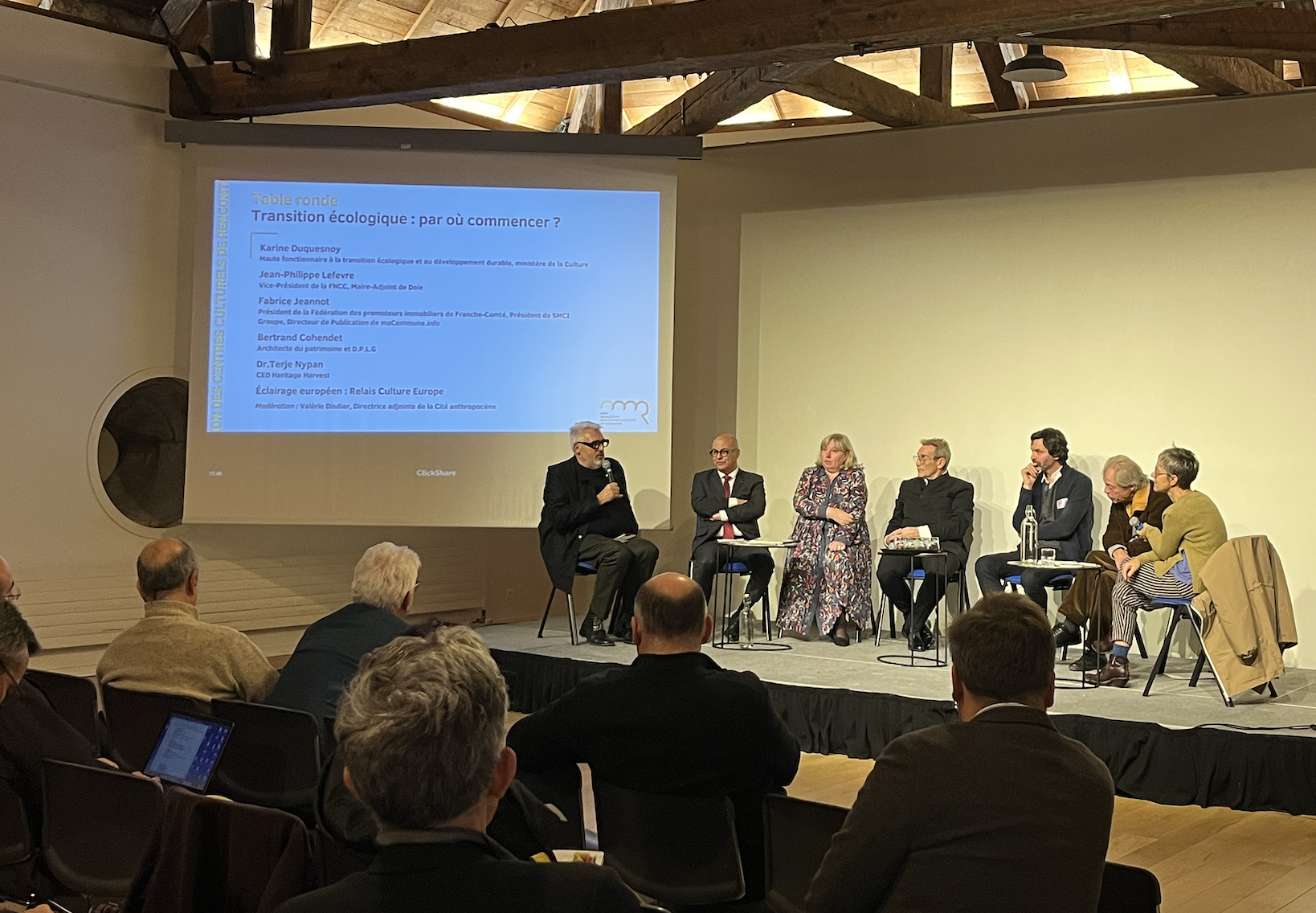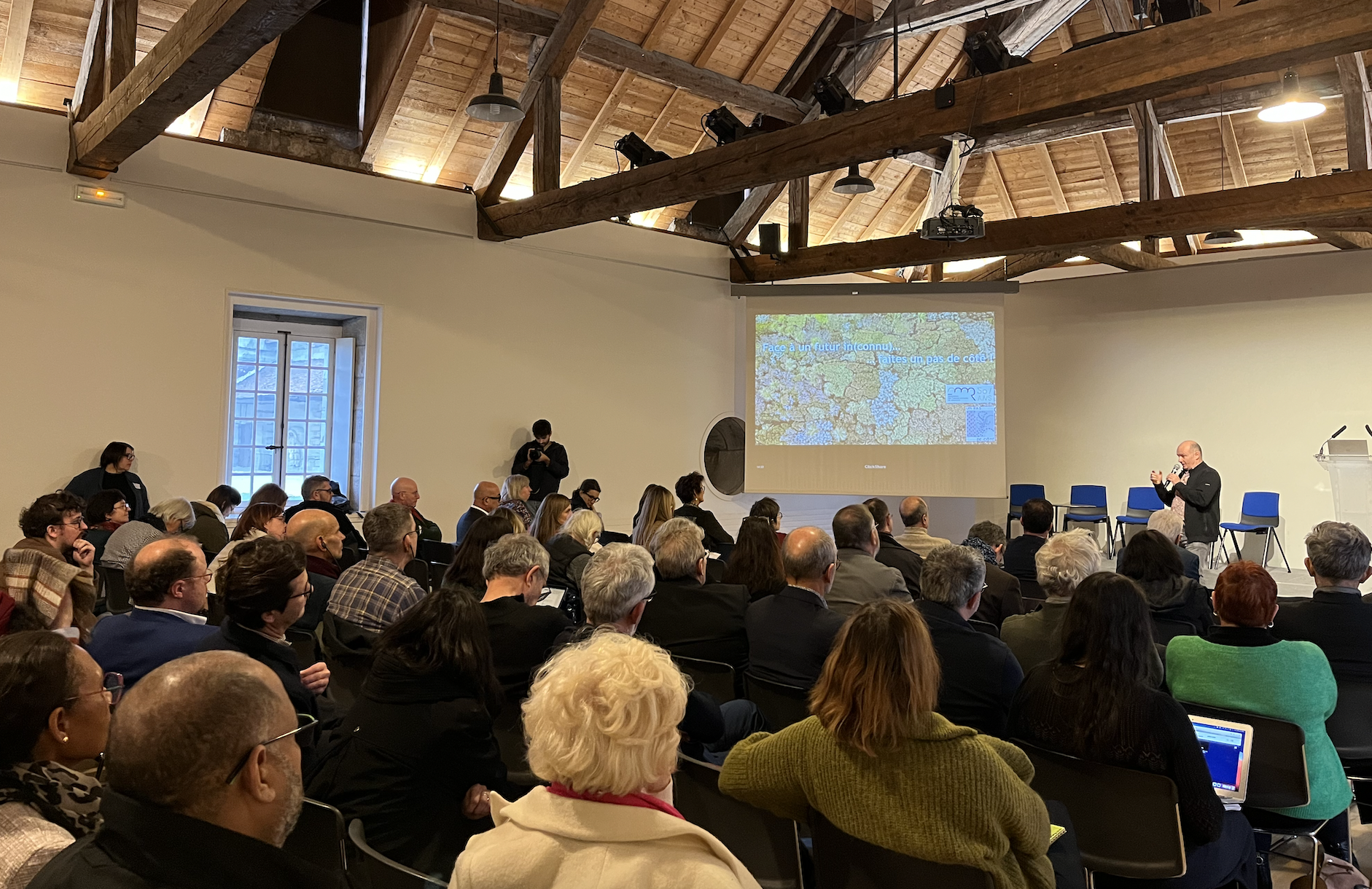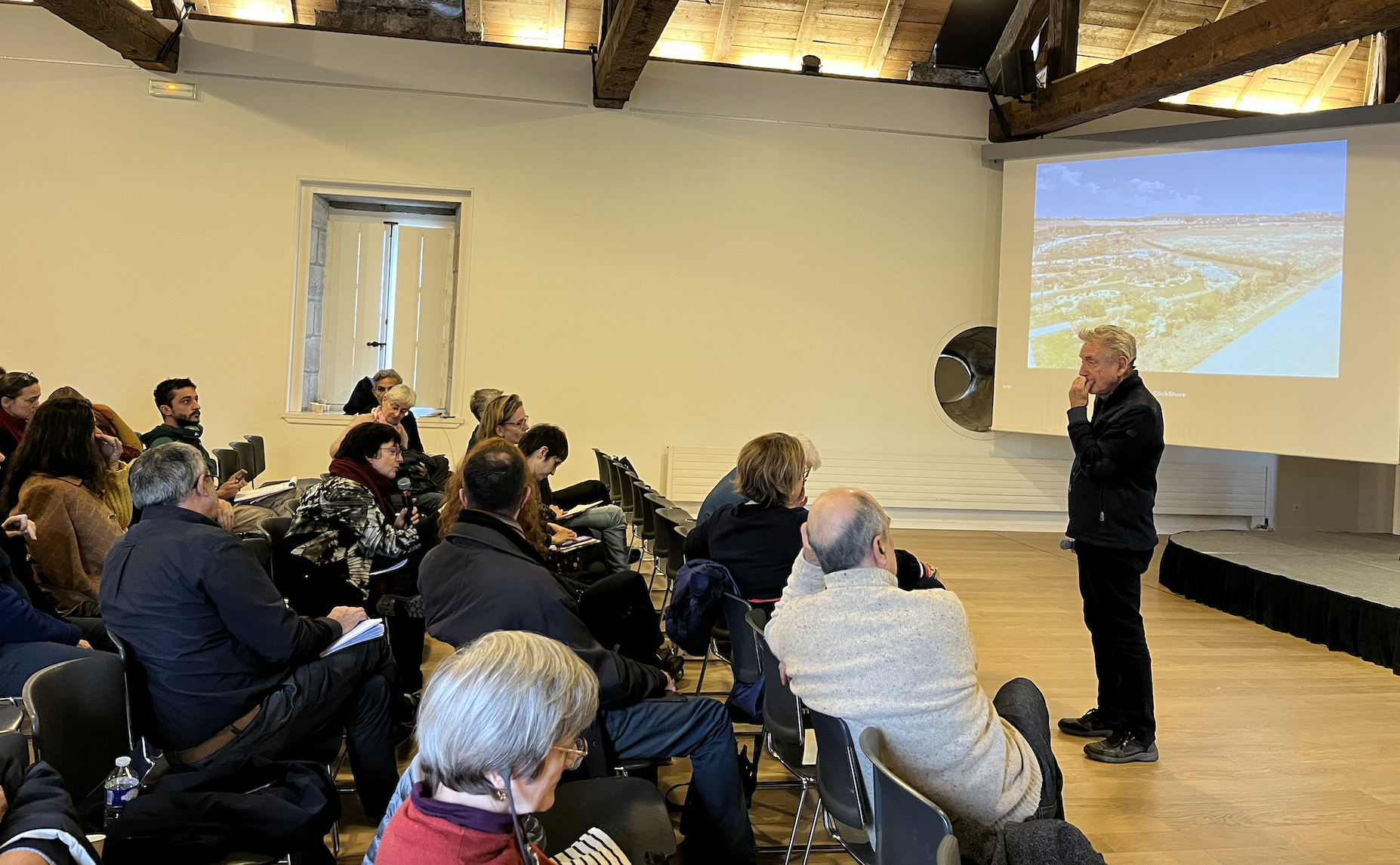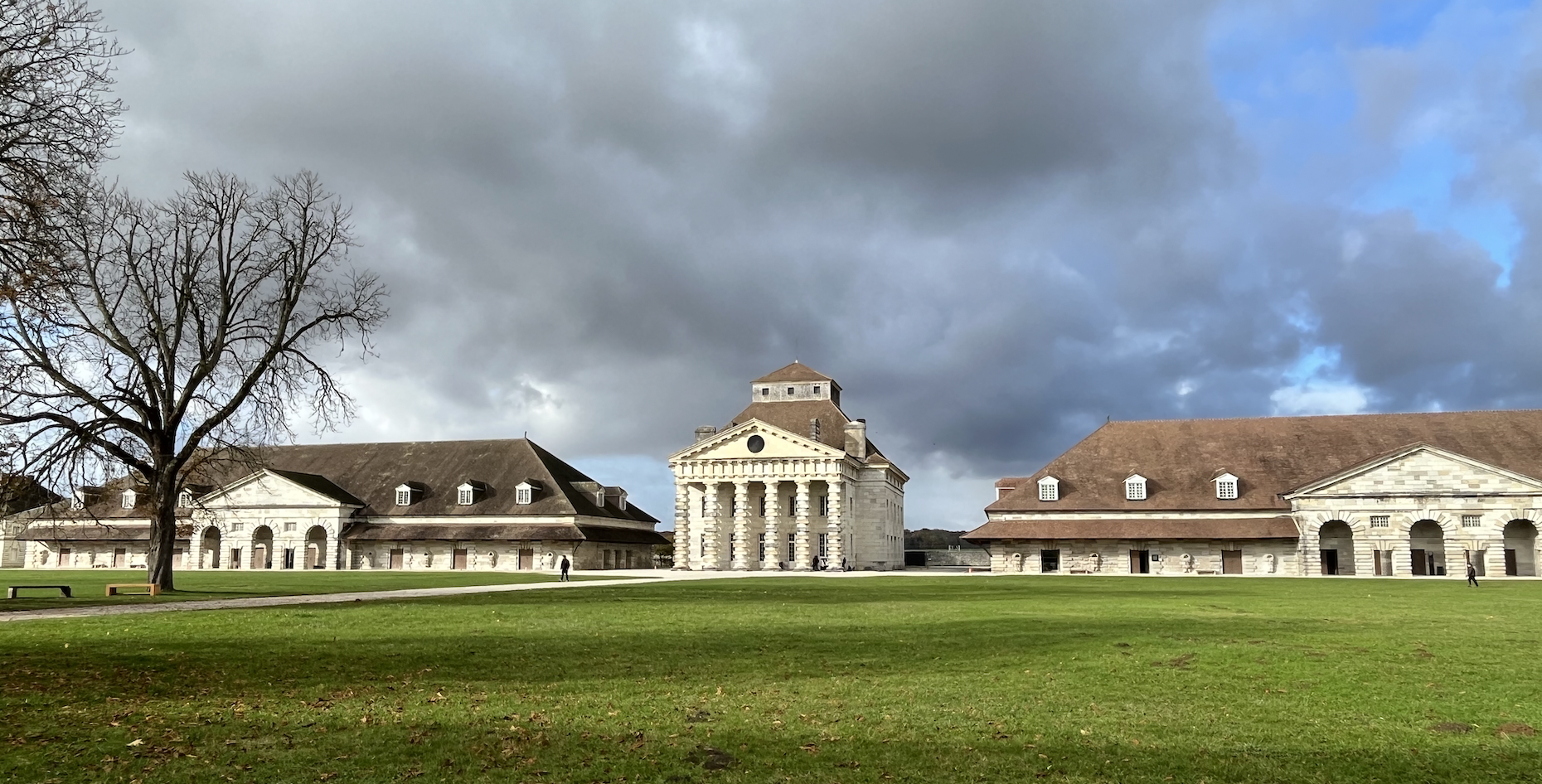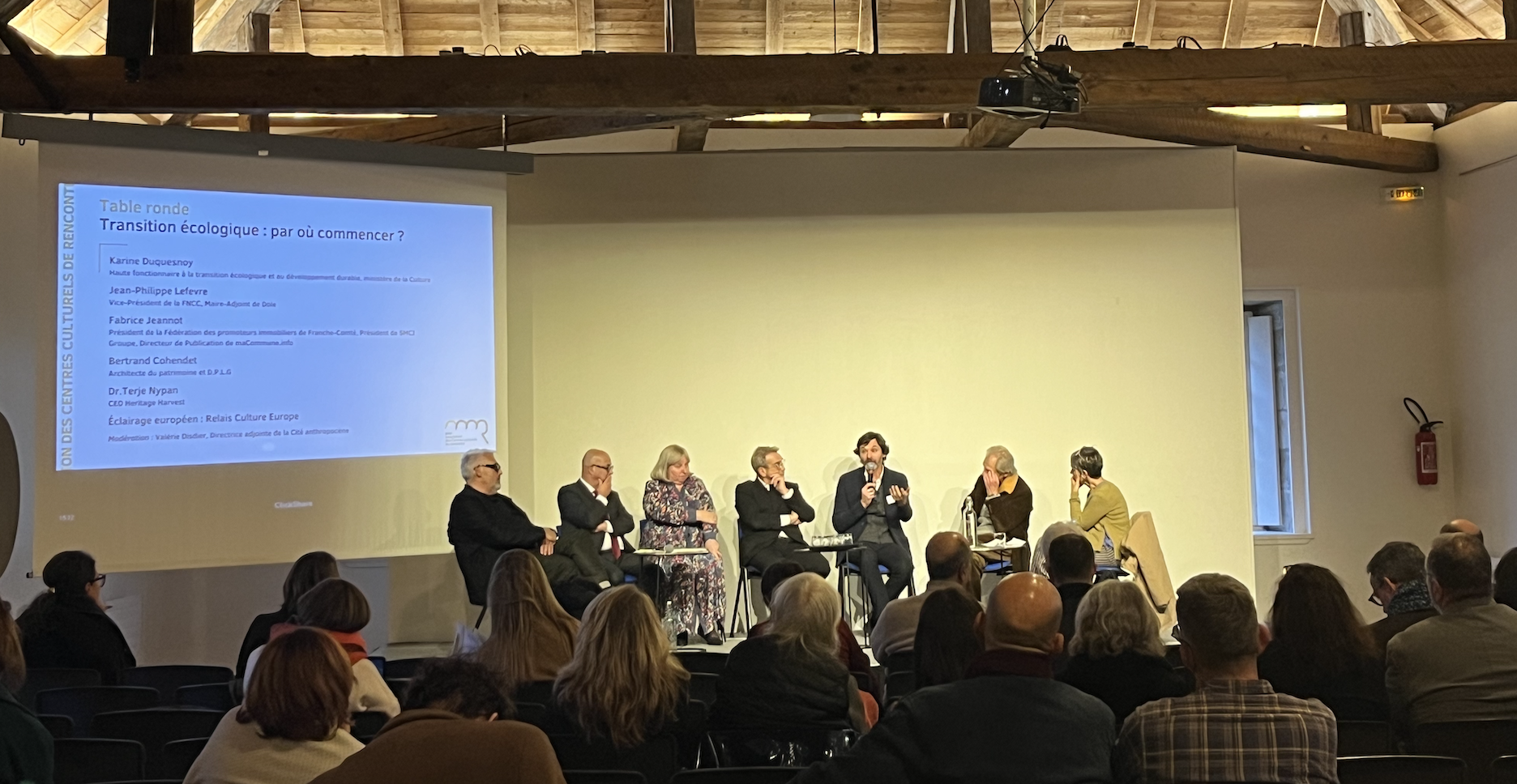From 16 to 18 November 2023, the ACCR organised the Rencontres européennes "Patrimoines & créations face aux transitions contemporaines" in partnership with the Saline royale d'Arc-et-Senans, the Ministry of Culture, the Relais Culture Europe and the FNCC.
Against a backdrop of climate disruption and uncertainty, the question of how the cultural sector can be transformed to adapt and change both mindsets and practices was the subject of much discussion. Round tables, conferences and workshops offered different opportunities for reflection, presenting background information, listing concrete examples of action, suggesting new avenues, and so on.
/Heritage and sustainable development
As landscape architect and gardener Gilles Clément points out, sustainable development is a concept that needs to be handled with care. It is more a vision, a way of projecting oneself and making choices than an objective in the sense that, by definition, development is unstable.
While sustainable development implies a transition, an evolution of a model that is already underway, in view of the climate challenges, it would be more appropriate to speak of a complete transformation of this model.
Daniel Gilbert, an expert in the functioning of wetlands, took stock of an out-of-control system that is heading for an inevitable catastrophe. The challenges of awareness and cooperation are more vital than ever, given our ever-increasing consumption of both fossil and sustainable energy sources.
While experts can predict future events such as food and water shortages and the collapse of national and regional resources, accurately predicting the consequences is more complex. Faced with this uncertainty, we need to be less efficient and more robust. While in a stable world, performance is relevant, in an unstable model, we need to be robust and redundant, i.e. have several paths to get to the same place.
Sustainability is expressed by this notion of robustness and by the ability of societies to adapt to uncertainty. Although human beings have always been able to adapt, the unprecedented acceleration in climate upheaval is tending to reduce the odds.
Given this undeniable need for rapid, global change, a new approach to heritage is underway. Bertrand Cohendet, a heritage architect, quotes the motto of the École de Chaillot, the school for heritage architects: "To be equipped to act in today's world and better respond to tomorrow's challenges".
This means paying particular attention to the materials used, which must allow the building to evolve over time. The use of concrete, for example, should be limited.
To achieve this cross-disciplinary transformation of the heritage approach, new alliances need to be forged between sectors that do not meet each other.
/Rethinking our approach to spaces
According to Gilles Clément, this change of system means rethinking our approach to and consideration of spaces. In the quest to listen to the environment and act accordingly, rather than talking about purely administrative boundaries, it would be more accurate to think in terms of biozones, which correspond to distinct climatic zones.
This responds to the need to relearn where we live and how we live over time. The current emphasis is on performance, profitability and economy, in the monetary sense, mastery of technology and so on. But this constitutes a barrier that obscures our understanding of natural genius. It is an illusion to believe that man can control his environment.
One of the aims of the European Meetings was to raise awareness of the vital issue of evolution and how we can change our way of life.
/Designing to create links
Gilles Clément has worked with several CCRs, including the Saline Royale and Noirlac Abbey, to rethink and propose new developments for the heritage site. This was done in a quest for harmony and respect for the natural heritage and biodiversity.
At the Abbaye de Noirlac, the project to modify the gardens was linked to a change in access to the site. So there was both something mechanical and educational about it, to give visitors the chance to discover plants they might not have known about on their way there. As for the Saline Royale d'Arc-et-Senans, Gilles Clément's proposal for the immense circle highlights the most precious asset of all, namely biodiversity, on which we depend. Not to preserve it would be to condemn ourselves. This exercise has led to the creation of a kind of planetary garden school.
In these specific cases, the landscaping has become an educational resource, confirming the mediation role of the RACs insofar as they enable us to increase and share our knowledge of living things. They are special places that facilitate this understanding and experimentation with living things.
This pedagogical aspect of transmitting and raising awareness is all the more valuable in a world that promotes technology rather than the manual and spiritual aspect provided by the link with nature.
As well as providing a link with the environment, some of the outdoor facilities, such as viewpoints and places to sit, also provide opportunities for visitors to meet up.
/CCRs, refuges for biodiversity
By paying such close attention to the relationship between the built environment and the natural world, CCRs can be seen as refuges for biodiversity. During a workshop on this theme, the examples of the Saline Royale and the Chartreuse de Neuville were presented.
The Saline Royale is located between two Natura 2000 areas, which means that the site is rich in wildlife. As an LPO refuge, the CCR is responsible for carrying out species inventories and providing information to the general public, in particular to publicise the work carried out through events and educational panels. The "immense circle", a characteristic feature of the Saline, was created with a view to making it an island of biodiversity as well as a laboratory for landscape skills.
La Chartreuse's actions include the introduction of differentiated management of areas and late mowing, as well as raising awareness among employees and visitors alike. Before each project that could have an impact on biodiversity, La Chartreuse carries out an inventory of the diversity present in order to highlight the ecological challenges and define a strategy accordingly. The resulting management is designed to take into account both current and future uses of the site. In order to implement these new projects, the Chartreuse de Neuville calls on a number of players: in-house expertise, ecological consultancies, naturalist associations, naturalist volunteers, and so on.
The two CCRs were keen to point out that even a project with ecological aims, such as rainwater harvesting, could have a negative impact on the environment when it is implemented.
/Culture as a lever for change
At both the round tables and the conferences, all the speakers agreed that culture has a real role to play as a lever for system change. By their very nature, culture and artists do not respond to a set of instructions, which makes them more adaptable than other sectors.
Cultural players, and the spaces for discussion that they provide, could correspond to the intermediary level in a society, i.e. between the individual and the State. The State would be in a position to respond to the desire to act of the individual level, which is in need of support.
Thanks to culture, which implies notions of living together and transmission, it is possible to envisage a more desirable future and to provide the means to achieve it. Culture, in whatever form, makes fundamental issues understandable and accessible, and so encourages people to take action.
With this in mind, the Look up festival, initially based on three possible scenarios for the future derived from scientific proposals, has evolved towards a more tangible approach: Fou2food in 2050. Pupils and students are invited to imagine a menu that could be enjoyed in 2050. This preparation is an opportunity to talk about water management, waste management and the foods to choose in order to reduce our environmental footprint.
Culture helps to re-establish a dialogue that is sometimes distanced from politics and science. The aim is to help people prepare for and project themselves into a new world by introducing a new approach to education, while trying to overcome eco-anxiety. Through these rethought approaches with citizens, the exercise of democracy is also fully at work.
This echoes the concerns of the Ministry of Culture expressed by Karine Duquesnoy, senior official for ecological transition and sustainable development at the Ministry of Culture, who insisted on the importance of working differently with the public to get them more involved and more receptive, as CCRs do on a daily basis.
Resource:
- Le Manifeste du tiers paysage, a work by Gilles Clément, presents landscape as a perception, reflecting a particular relationship with living beings, space and institutions. This text invites us to cultivate spaces of "non-action" at all levels of our lives.

